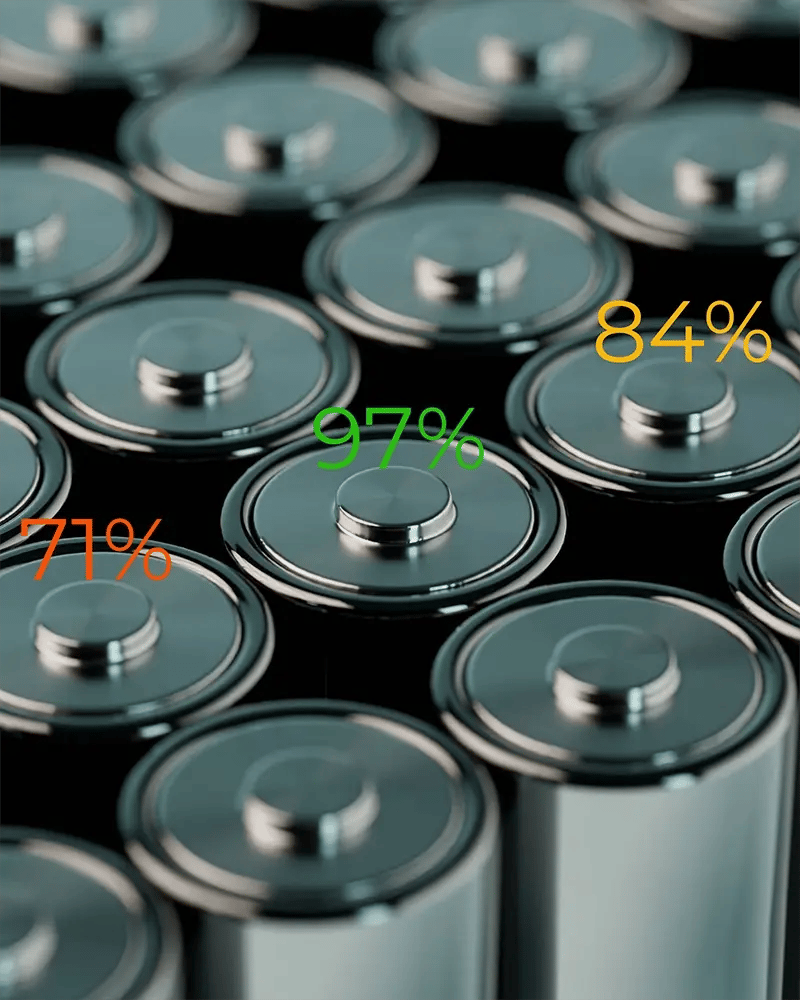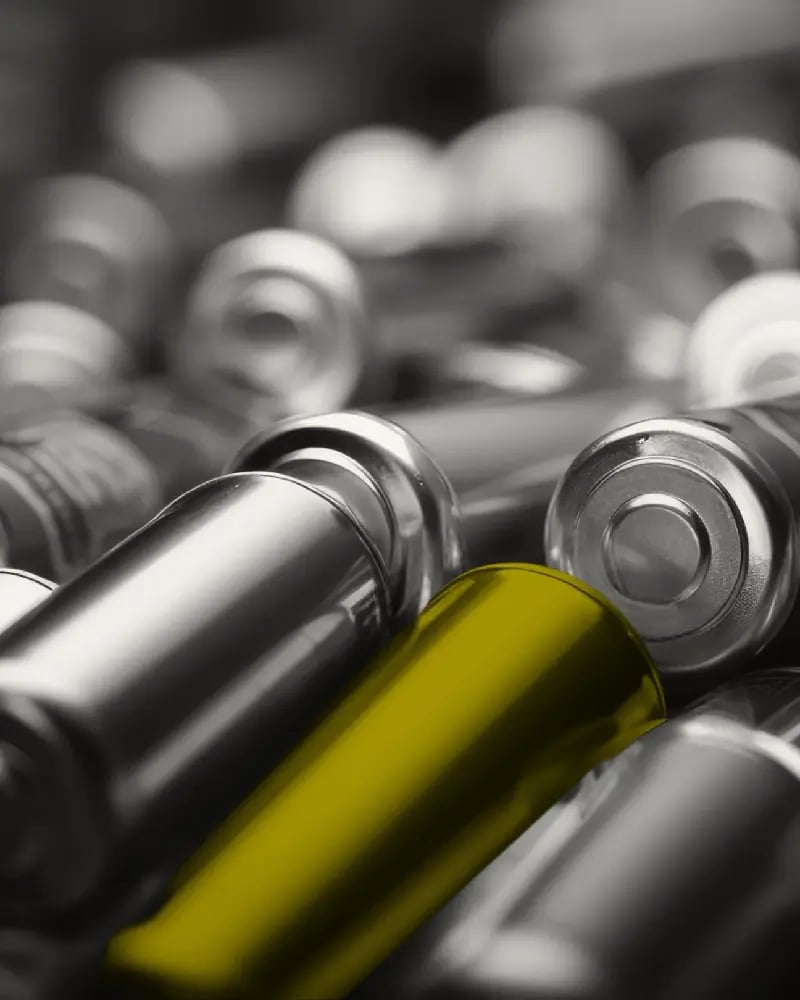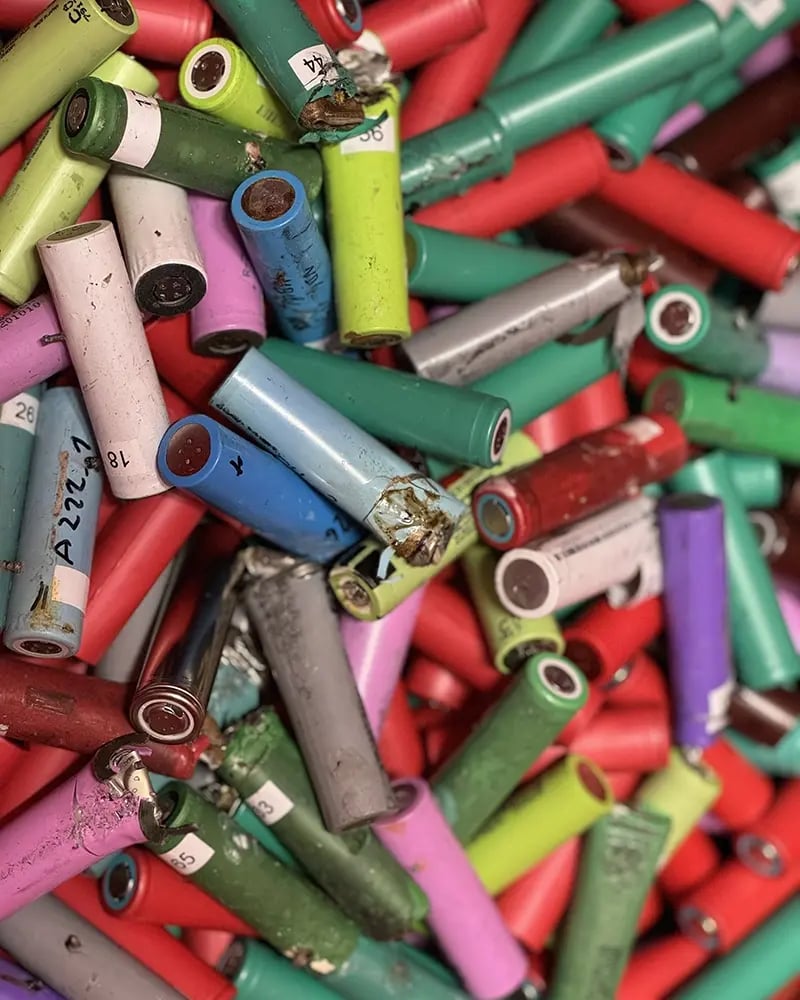Enhance sustainability
Gain certainty and higher profits
Ensure product realiability and safety
Save money and resources
Overcoming battery second life assessment challenges
Determining the State of Health (SoH) of a used battery is critical for assessing its potential for second life applications. The SoH indicates the remaining capacity and overall condition of the battery. Accurate SoH assessment requires advanced diagnostic tools and methodologies to evaluate the battery's performance metrics, such as capacity, internal resistance, and cycle life. Inaccurate SoH determination can lead to premature disposal or inappropriate reuse, impacting both safety and economic viability
Accurate battery quality assessment often relies on manual and time-consuming processes. Assessing the condition of each battery can take several hours and each battery type might require varying methods and hardware. This causes the quality assessment to be slow and resource intensive process.
There is a lack of standardized testing protocols and criteria for evaluating the suitability of batteries for second life applications. This inconsistency makes it difficult to compare results across different batteries and manufacturers.
The economic viability of second-life batteries depends on their costs and usability compared to new batteries. The cost of used batteries involves expenses for testing, refurbishing, and redeploying. If the process is too costly, it may not be financially sustainable. Economic models need to account for both the costs and benefits of second-life applications, including potential savings and environmental and reputational benefits.
Safety is a major concern when repurposing used batteries. Degraded batteries can pose risks such as leakage, thermal runaway, and short circuits. Ensuring that second life batteries are safe for their new applications requires high quality and reliable testing.
While second life applications can reduce the environmental footprint of batteries by extending their useful life, the overall environmental impact depends on how the batteries are managed at end of life. Effective recycling is necessary to ensure that second life batteries do not contribute to environmental pollution.












What CeLLife can provide to you
Speed
Measurement results in seconds, not hours. Test hundreds of cells and batteries while traditional methods would still be processing the first.
Accuracy
Laboratory grade accuracy, delivers over 2,000 data points in under 2 seconds, which is 900 times faster than other methods.
Data & analytics
All essential data, comprehensive insights, and analytics are in the cloud, enabling informed decision-making in real-time.
Modifiability
For all cell and battery chemistries and types, from battery modules and packs to supercapacitors and fuel cells.

Second use assessment

Testing and measurement

Data mining and analytics
Benefits for battery second life stakeholders
CeLLife's advanced technology significantly benefits battery second life assessment by addressing critical evaluation and quality assurance issues. Determining the State of Health (SoH) of used batteries is essential to ensure their suitability for second-life applications. CeLLife’s Electrical Fingerprint Platform (EFP) is a rapid and reliable solution for laboratory grade measurements in seconds, allowing users to test thousands of batteries at the cell level daily. This substantial increase in testing speed enhances efficiency and ensures more effective quality based pricing.
This fast quality control process not only saves money and enhances certainty but also ensures that only safe high-quality batteries are selected for second-life applications. This is crucial for ensuring the reliability of devices and systems that rely on these batteries. CeLLife's quick and accurate testing ensures that second-life batteries are reliable and functional for their new purposes.
Moreover, CeLLife offers comprehensive data and analytics capabilities where users can access data from previous tests and leverage AI-driven insights. The technology ensures swift grading and characterization of batteries, guaranteeing safety, enhancing profits, and maximizing battery usage. For example, safe batteries with weaker capacity can be prized lower compared to batteries with high remaining capacity, which ensures optimal resource utilization where good batteries don't end to extraction too early.